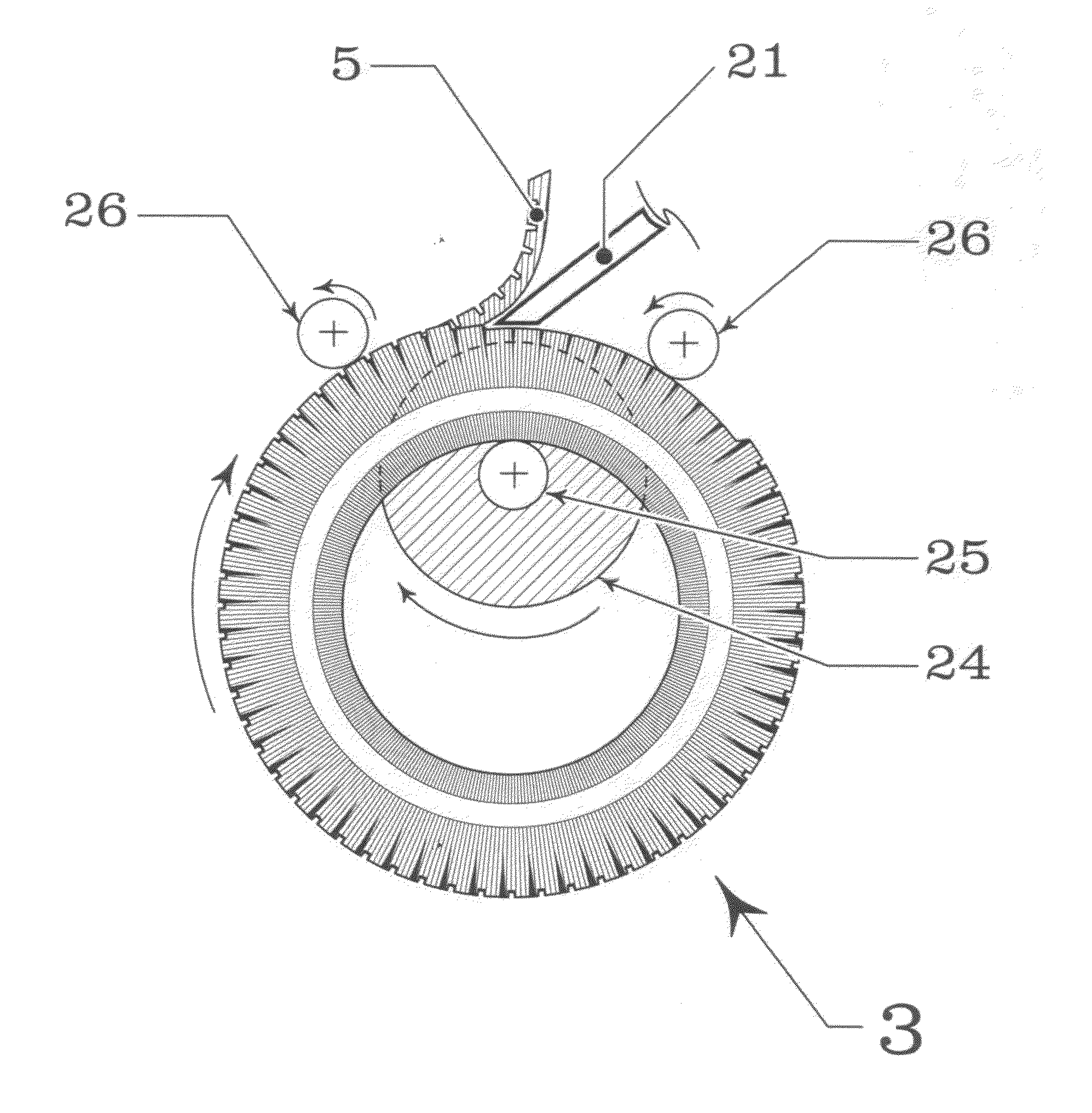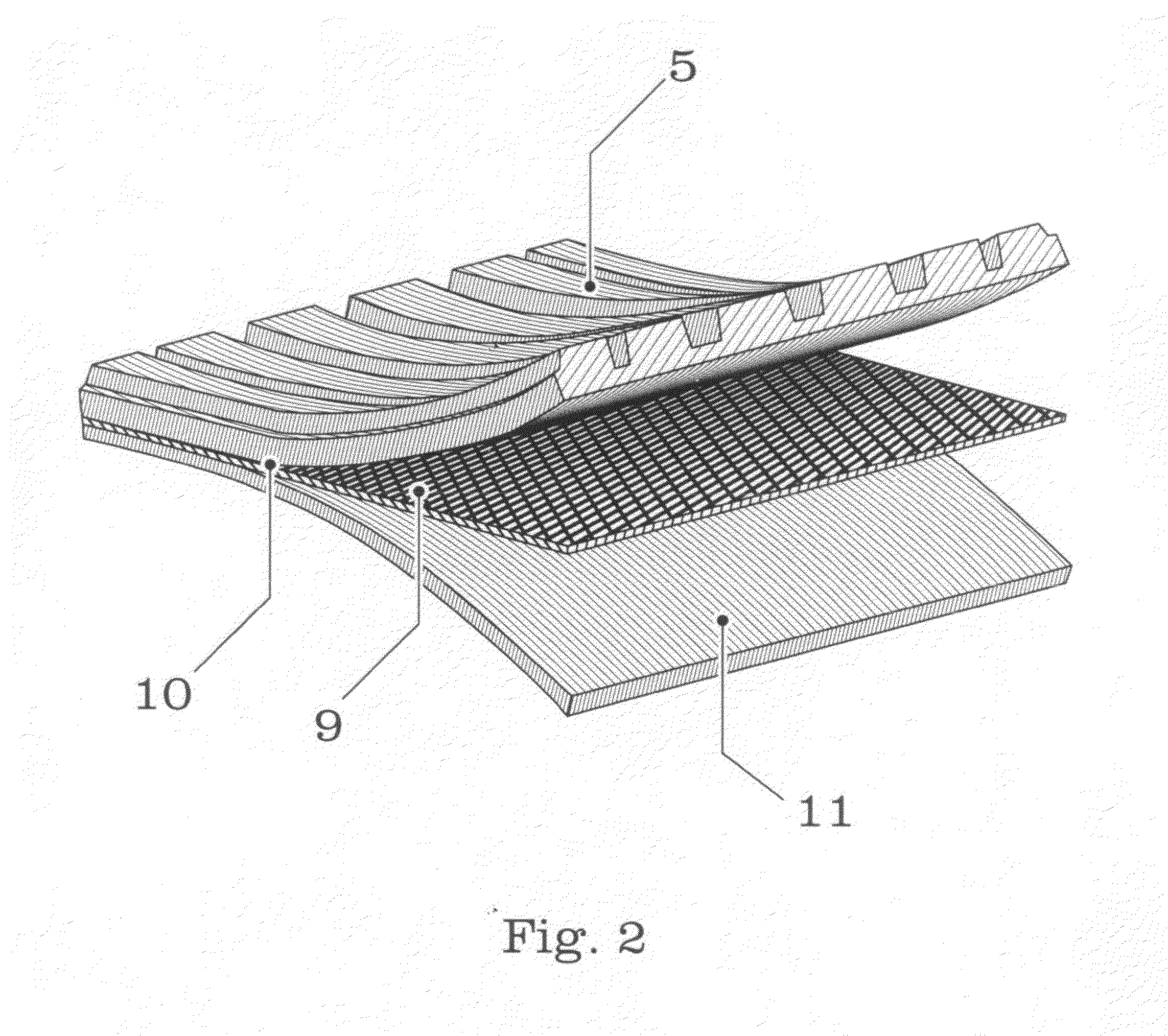Recovery of high value rubber from tires
- Summary
- Abstract
- Description
- Claims
- Application Information
AI Technical Summary
Benefits of technology
Problems solved by technology
Method used
Image
Examples
Embodiment Construction
[0026]Referring to FIGS. 1 and 2, a typical tire 3 includes a tread portion 5, a reinforced portion 7 below the tread portion 5 and typically having one or more layers of steel belts 9 as its reinforcement, and an inner rubber liner 11 below the reinforced portion 7. The inner rubber liner 11 may or may not have additional reinforcement including nylon or fibers 12. The tire 3 also has a sidewall 13 and a bead 15. The portions of the tire 3 having the most valuable rubber are the tread portion 5, the inner liner 11 and the sidewall 13.
[0027]The present invention of recovery of high value rubber from tires includes several process steps to separate the tread portion 5 and inner liner 11 from the reinforced portion 7 of a tire 3.
[0028]The tire 3 is processed by first removing the sidewalls 13 from the tire 3. Next, the metal beads 15 that are contained in the side walls 13 are removed. Commercially available equipment could be used to perform these functions.
[0029]As the inventors hav...
PUM
| Property | Measurement | Unit |
|---|---|---|
| Pressure | aaaaa | aaaaa |
| Width | aaaaa | aaaaa |
Abstract
Description
Claims
Application Information
 Login to View More
Login to View More - R&D
- Intellectual Property
- Life Sciences
- Materials
- Tech Scout
- Unparalleled Data Quality
- Higher Quality Content
- 60% Fewer Hallucinations
Browse by: Latest US Patents, China's latest patents, Technical Efficacy Thesaurus, Application Domain, Technology Topic, Popular Technical Reports.
© 2025 PatSnap. All rights reserved.Legal|Privacy policy|Modern Slavery Act Transparency Statement|Sitemap|About US| Contact US: help@patsnap.com



